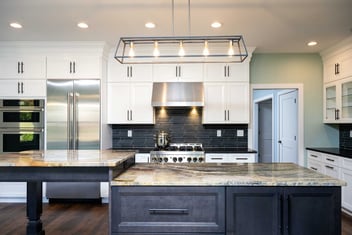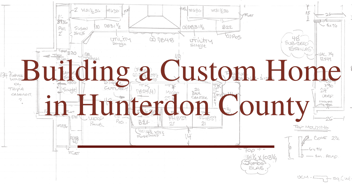3 Min Read
Goal Creep: The Real Danger When Building a New Home
.jpg?width=1512&height=1006&name=NP2_1486%20(1).jpg)
Recently, we wrote an article about scope creep. This is a problem that clients can experience when a home improvement or new custom home project gets underway. Now we'd like to talk about a similar problem: goal creep.
Goal creep can slow the design process and inflate your home building budget. Ultimately, goal creep can put a wrench in your home building process, and may lead to problems like a prolonged design and construction time or even a failed project due to a missed budget.
Before you get started with your home building project, we encourage our clients to learn more about goal creep, how it happens, and what you can do to stop this phenomenon from taking over your custom home building project.
What Is Goal Creep?
Goal creep looks like this: a client starts the home building process with a goal. They know what they want. They have a vision in mind. They're ready, enthusiastic, and excited to start the building process.
After the design process begins, the client starts to realize how many options are available to them. They start re-shaping their goals. Before anyone knows what's happening, design and material options the homeowner never before considered have been added to the final plans. The home the client set out to build has become far more expensive and complicated. This adds weeks or months to the design process.
How to Reduce Goal Creep
The best way to reduce goal creep is to be aware that this problem can occur, to do research before the custom building process begins, and to work with a custom home builder that has perfected a tailored home building experience.
Do Some Research
A custom home is a house that's built to your exact specifications. There are so many options that the process can be overwhelming for some home buyers. Keep the process manageable by taking the time to decide in advance what kind of home is right for you.
- Make a list of goals. Answer questions like, how much space do you need? Who will live there? What hobbies and activities will you engage in on your property? How can your home be customized to enable these activities?
- Explore materials in advance. Visit showrooms, look at magazines and catalogs, look at prices. Go to places where you can touch materials to get a sense for what they look like and how they perform.
- Know what others are doing. You'll start to form your idea of what a custom home should look like if you know what other home buyers have done with their homes. You can find this out by exploring custom home builder websites and looking through portfolios, scouring real estate ads online and by looking at home improvement and home design websites. Take a look at some of the latest 2021 custom home trends here.
- Have long talks with family members. The more that everyone in your home is on board with the home you're planning to build, the harder it will be to stray from your original plan. Engage in talks with members of your household and family members. Ask questions like, what are your expectations for our new home? What do you hope to gain by building our new home, rather than buying a pre-owned home?
Work With an Experienced Builder with a Streamlined Process
The more experience your home builder has working with buyers and building homes, the easier it will be for you to meet your goals while sticking your original carefully planned budget. At GTG Builders, we've got over 65 years of experience keeping home buyers on the right path with their home building projects. GTG Builders has used their years of experience to craft a home build-design process that reduces goal creep.
Coordinated Supplier Visits
During the sales process with GTG Builders, you'll visit major suppliers to identify the materials that work best for your home improvement project or custom home. This helps us provide accurate and adequate allowances when creating your design and contract. The builder and the client then have the same expectations as they move into the construction process. This is another way we can keep the project moving and avoid major delays and high costs for materials.
Strong Communication
Communication is critical during a complicated building project. That's why we meet multiple times before a contract is signed. This helps ensure that your needs are being met, and you're on track to meet your goals. As you transition from the sales phase to the construction phase, we continue to schedule regular meetings at the project site as a way to maintain open communication about the project goals.
Project Management
We use a project management software to keep the job organized and ensure that all parties have the most up to date information throughout the design and construction process. This helps ensure that you're aware, at all times, of how much your project will cost, when materials will be shipped and available, when important design or building steps are taking place and more. You'll be able to see the impact of changes to the design in real-time, as they occur.
Streamlined Design-Build Process
Some home buyers choose to work with a builder and separate architect firm and a separate interior designer. Working between two or more separate entities in this way can be inefficient and may lead to miscommunications, delays and unintended consequences when changes to the design are implemented.
GTG Builders offers in-house design services to prevent these problems from occurring. Our designers have a close working relationship with our builders, to ensure that all changes made to your design are quickly and efficiently communicated with all parties, to prevent any delays from taking place.

![Custom Home Guide [Free PDF]](https://no-cache.hubspot.com/cta/default/4115166/1b5890b7-1c78-435c-8024-2b9467bf420b.png)


